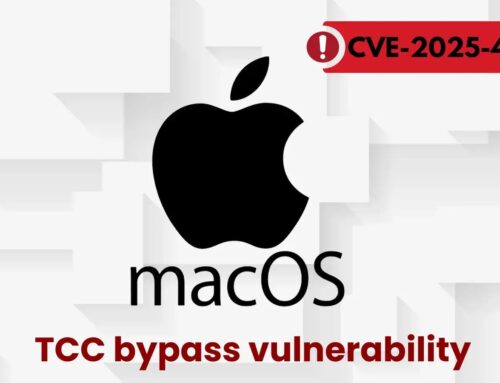
Threat Actors Leveraging Windows and Linux Vulnerabilities in Real-world Attacks to Gain System Access
Navigating the Dual Threat: When Windows and Linux Vulnerabilities Converge
The cybersecurity landscape currently faces a significant challenge: a surge in sophisticated campaigns exploiting vulnerabilities across both Windows and Linux environments to achieve unauthorized system access. This evolving threat posture demands immediate attention from cybersecurity teams worldwide, as these attacks often leverage a multi-pronged approach, beginning with initial compromise and escalating through the exploitation of unpatched software components.
The Anatomy of a Dual-Platform Attack
Modern cyberattacks increasingly target the weakest link within an organization’s network, regardless of the underlying operating system. Threat actors are no longer siloed in their approach, instead demonstrating a clear capability to pivot between Windows and Linux systems as dictated by their objectives and the available vulnerabilities. Initial access typically involves classic social engineering tactics, such as meticulously crafted phishing emails or malicious web content designed to deliver weaponized documents. Once opened, these documents unleash embedded exploits that target unpatched vulnerabilities in commonly used software. This initial foothold then allows attackers to escalate privileges, move laterally, and ultimately gain persistent access to sensitive data or critical infrastructure.
The true danger lies in the attackers’ ability to leverage a vulnerability on one platform, like a Windows workstation, to then gain access to and exploit a server running Linux, or vice-versa. This cross-platform proficiency significantly complicates an organization’s defense strategy, requiring a holistic view of security across all operating environments.
Key Vulnerability Targets: A Dual-OS Perspective
While specific CVEs are constantly being discovered and exploited, threat actors frequently target vulnerabilities that offer broad applicability or significant impact. These often fall into categories such as:
- Unpatched Software: Outdated versions of browsers, office suites, PDF readers, and even system utilities present a treasure trove for attackers. Often, publicly known vulnerabilities (CVEs) in these applications remain unpatched by organizations, creating an open door. For instance, exploits targeting vulnerabilities like CVE-2023-21715 (Microsoft Office) or older issues in popular browser engines could serve as initial entry points.
- Credential Theft & Privilege Escalation: Once an initial foothold is established, attackers invariably seek to elevate their privileges. This can involve exploiting weaknesses in Windows’ Active Directory or Linux’s Sudo configurations, or vulnerabilities in specific system services. Examples include vulnerabilities like CVE-2021-40444 (Microsoft MSHTML Remote Code Execution) for Windows or specific Kernel privilege escalation vulnerabilities in Linux.
- Server-Side Exploits: For server environments, vulnerabilities in web servers (Apache, Nginx, IIS), database management systems (MySQL, PostgreSQL, MSSQL), or other network services provide critical access. Remote Code Execution (RCE) vulnerabilities are particularly sought after, as they allow direct execution of arbitrary code on the server. Examples might include vulnerabilities affecting outdated versions of Samba on Linux or remote code execution issues in IIS on Windows.
Remediation Actions and Proactive Defense
Mitigating the risk posed by adversaries exploiting both Windows and Linux vulnerabilities requires a multi-layered and proactive defense strategy. Focusing on these key areas can significantly bolster an organization’s security posture:
- Vulnerability Management and Patching: This is the cornerstone of defense. Implement a robust vulnerability management program that includes regular scanning and a strict patching schedule for all operating systems, applications, and services. Prioritize critical and high-severity vulnerabilities for immediate remediation. Automate patching where feasible to reduce human error and speed up deployment.
- Endpoint Detection and Response (EDR) & Extended Detection and Response (XDR): Deploy EDR solutions on all workstations and servers (Windows and Linux) to monitor for suspicious activities, detect malicious processes, and respond to threats in real-time. Consider XDR for a broader view across endpoints, network, cloud, and identity.
- Network Segmentation: Implement network segmentation to isolate critical systems and limit lateral movement by attackers. If a segment is compromised, the attacker’s ability to reach other parts of the network is severely restricted.
- Least Privilege Principle: Enforce the principle of least privilege for all users and services. Users should only have access to the resources absolutely necessary for their job functions, and services should run with the minimum required permissions.
- Security Awareness Training: Educate employees about common social engineering tactics, such as phishing and malicious attachments. A well-informed workforce is the first line of defense.
- Application Whitelisting: Implement application whitelisting to control which applications can execute on endpoints and servers. This can prevent the execution of malicious software.
Recommended Security Tools
| Tool Name | Purpose | Link |
|---|---|---|
| Tenable.io / Nessus | Comprehensive Vulnerability Management & Scanning | https://www.tenable.com/products/tenable-io |
| Qualys VMDR | Vulnerability Management, Detection & Response | https://www.qualys.com/security-conference/ |
| CrowdStrike Falcon Insight | Endpoint Detection and Response (EDR) | https://www.crowdstrike.com/products/endpoint-security/falcon-insight-edr/ |
| Microsoft Defender for Endpoint | Unified Endpoint Security Platform for Windows & Linux | https://www.microsoft.com/en-us/security/business/threat-protection/microsoft-defender-for-endpoint |
| OpenVAS | Open Source Vulnerability Scanner | https://www.openvas.org/ |
Conclusion
The increasing trend of threat actors leveraging vulnerabilities across both Windows and Linux environments underscores the need for integrated, comprehensive cybersecurity strategies. Organizations can no longer afford to secure their operating systems in silos. By prioritizing proactive vulnerability management, implementing robust detection and response capabilities, and fostering a strong security culture, enterprises can significantly enhance their resilience against these sophisticated, dual-platform attacks and protect their critical assets.





